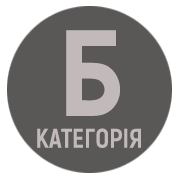Representation of the SUN/LE SOLEIL concept in English and French linguistic cultures
DOI:
https://doi.org/10.32782/2617-3921.2025.27.141-151Keywords:
representation, linguistic world picture, dictionary definition, concept, phraseological unit, conceptual and figurative features, cognitive feature, linguistic culture, worldviewAbstract
The article focuses on the study of conceptual and figurative features of the concept SUN/SOLEIL in English and French linguistic cultures as a fragment of the linguistic world picture, its ways of representation based on dictionary definitions, as well as to the analysis of similarities and differences of cognitive features of the said concept in the two linguistic cultures. The article carries out various types of analysis of the above-mentioned concept, namely: etymological, semantic, cultural, discursive as well as phraseological; it characterizes substantive-attributive phrases with the core component SUN/ SOLEIL: bright sun, golden sun, morning sun, evening sun, hot sun, rising sun, burning sun, blinding sun, distant sun, tropical sun (English); le soleil brillant, le soleil doré, le soleil du matin, le soleil du soir, le soleil ardent, le soleil levant, le soleil couchant, le grand soleil, le soleil éclatant, le soleil tropical which is perceived in the projection of certain Anglo-French realities that concentrate important, culturally significant information around them. It is noted that the lexeme SUN/SOLEIL is widely used as part of phraseological turns: ‘a placein the sun’, ‘make hay while the sun shines’, ‘everything under the sun’, ‘the sun never sets on’(англ.м.);‘sous le soleil exactement’, ‘faire le soleil dans la maison’, ‘un enfant du soleil’, ‘après la pluie’, ‘le beau temps’ ((French). It is investigated that phraseological units use the image of the sun to express various aspects of life, from good luck and prosperity to time and changing circumstances.It is found that the considered phraseological units play a significant role in the linguistic space and most vividly characterize persons, objects and phenomena of reality. The concept is vividly represented in many works of different genres and styles of English and French literature. The analysis has shown that the studied lexical unit in the two linguistic cultures is considered as a philosophical concept of worldview, which is an integral part of human nature, constitutes the leading paradigm of the value cultural aspect, which knows no boundaries of time and space and constitutes the formula of our thinking and worldview.
References
Заремська І. Мовна картина світу як об’єкт лінгвістичних досліджень. URL: https://enpuir.npu.edu.ua/. Дата звернення 05.03.2025.
Кочерган M.П. Загальне мовознавство: підручник. Київ: Академія, 2003. 464 с.
Пасинок В.Г., Бондаренко Е. В. Лінгвокогнітивні механізми у комунікативному акті. Вісник Харківського національного університету ім. В. Н. Кара- зіна. № 773, 2007. 3 с.
Chambers 21st Century Dictionary. URL: https://chambers.co.uk/search/?query=sun&title=21st (дата зв.: 06.03.2025).
Горох (онлайн-бібліотека словників української мови). URL: https://goroh.pp.ua/Етимологія/сонце (дата звернення: 15.02.2025).
Вікісловник URL:https://uk.wiktionary.org/wiki/soleil (дата зв.: 06.03.2025).
Онлайн перекладач&словник. URL: https://ua.opentran.net/ukrainian-french/ сонце.html (дата звернення: 06.03.2025).
Портал української мови та культури СЛОВНИКUA: веб-сайт. URL: https://slovnyk.ua/index.php?swrd=омофони (дата звернення: 03.03.2025).
Українська електронна бібліотека LibreTexts:веб-сайт. URL: https://ukrayinska.libretexts.org (дата звернення: 03.03.2025).
Cambridge Free EnglishDictionary: веб-сайт. URL: http://dictionary.cambridge.org/english/sun (дата зв.: 27.02.2025).
Ripert P. Dictionnaire des maximes, dictons et proverbes français. Maxi-Livres, 2001. 127 с.
Tom McArthur Longman Dictionary of English Idioms. Harlow, 1979. 491 с.



